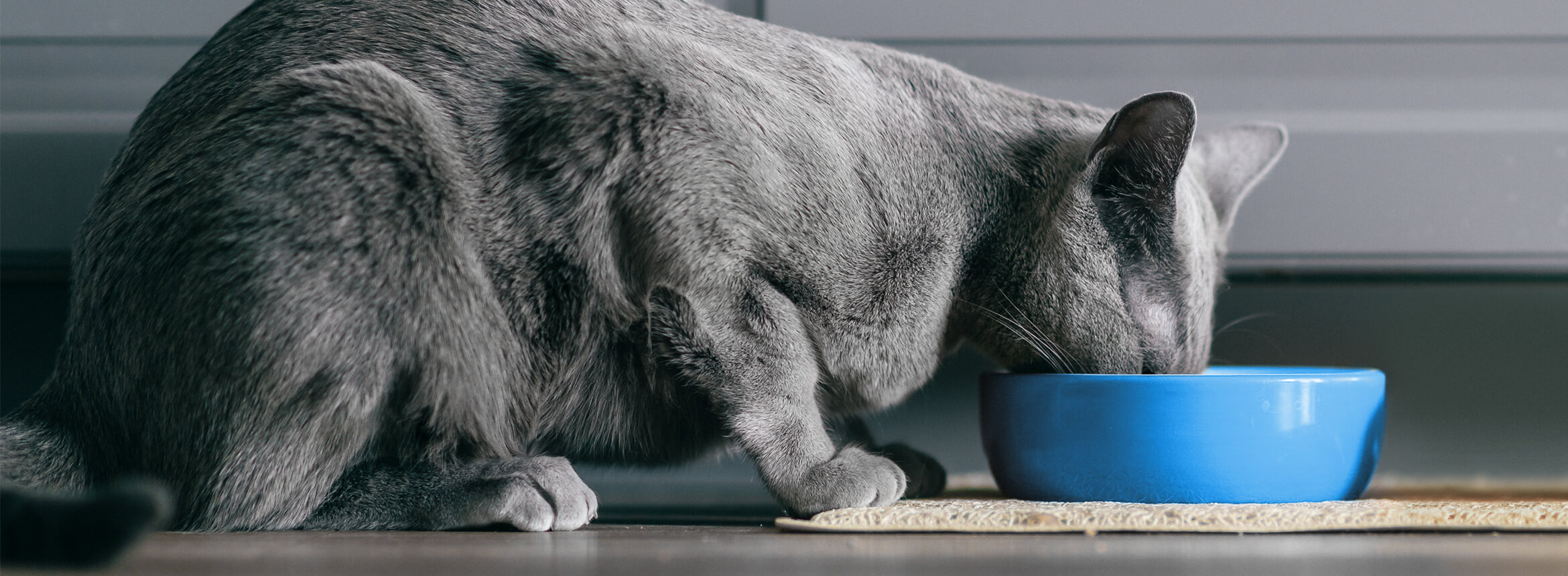Switch Cat Food Slowly
When you transition from one cat food to another, take a cue from your cat’s ancestors stealthily hunting prey in the wild: move deliberately and slowly. Sudden diet changes can upset your cat’s stomach and cause diarrhea, vomiting or even a reduced appetite.
Plan on taking 1-2 weeks to transition from one cat food to another, depending on if you feed wet or dry food. If your feline isn’t finicky, start by adding a small amount of new food in with the original food, mixing thoroughly so your cat can’t choose which parts of the food to eat.
How to Know When it’s Time to Increase the Amount of New Food
You’ll know when to move on to the next percentage of new food by checking your cat’s stools. If they’re firm and not soft or watery, it’s time to increase the percentage of new cat food. If your cat tolerates the food switch well, you should be feeding only the new cat food at the end of the transition.
Remember, every cat is unique. Transitioning your cat’s food may take longer than a week or two and that’s normal. It’s okay to feed the same mixture of new and old cat foods for several days before increasing the amount of new food. If you offer too much new food too soon, your cat may have gastrointestinal symptoms and refuse to eat the new food altogether.
Transitioning Tips for Picky Eaters
Finicky felines can become so accustomed to a specific diet, it may seem impossible to switch cat foods. Although it may require more time and patience, don’t give up. Above all, don’t starve your cat into eating the new food. Felines should not fast for more than 24 hours. Tell your veterinarian if your cat doesn’t eat after a whole day without food.
Picky cats, often participants in the all-day buffet style of eating, may turn up their nose at a change in the menu. If this sounds like your cat, it’s time to shut down the 24-hour cafe and replace it with scheduled meals. You may want to transition to specific mealtimes while still serving the original cat food so your feline isn’t overwhelmed by too many changes at once.
Feed one meal two to three times a day at set times, being sure to remove any uneaten food after about 20 to 30 minutes. If your cat doesn’t eat the food during those 20 to 30 minutes, don’t replace the serving with a new meal. Once your cat is eating during scheduled times, follow the transitioning schedules mentioned above.
Pro Tip: Another way to acclimate your cat to new food is to offer a taste test. Place a small amount of the new cat food on your feline’s leg and when your cat starts to groom, she’ll naturally sample the new food and hopefully like it.
Pro Tip: Schedule 15 to 20 minutes of playtime before each meal to increase your cat’s appetite and help make the new food more palatable.
As with any diet, watch your feline’s weight carefully. If your cat loses weight or refuses to eat during the transition, tell your veterinarian right away. If your cat has a sensitive stomach, food allergies or other gastrointestinal diseases, she may need more time to switch foods and may require a special diet recommended by veterinarians. We hope your cat’s food switch goes off without a hitch.

